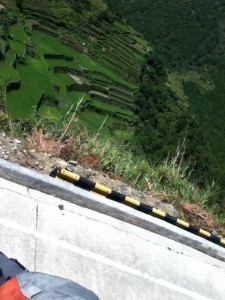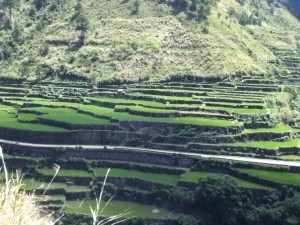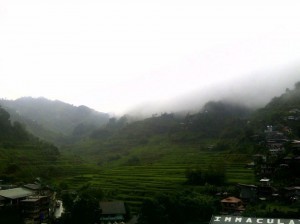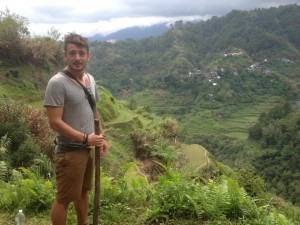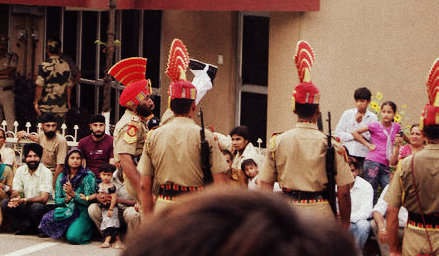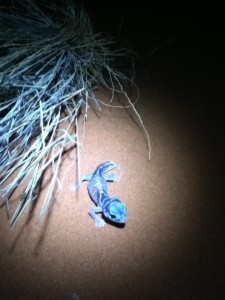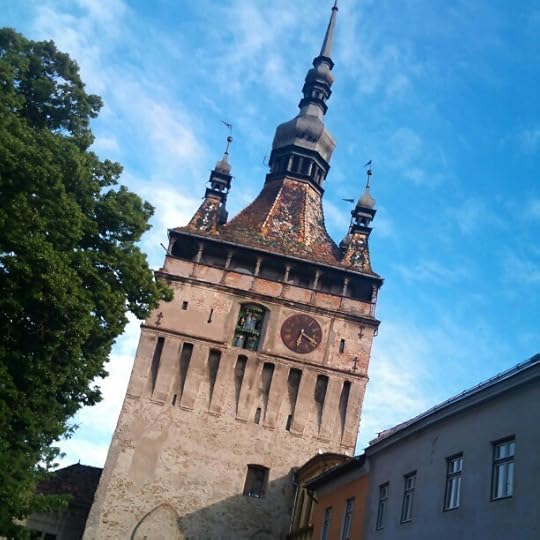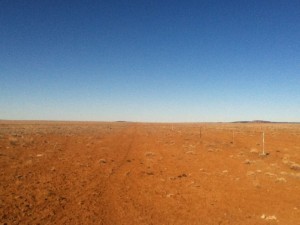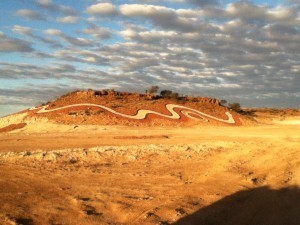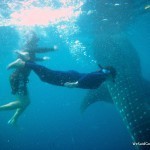Lisa Niver's Blog: We Said Go Travel, page 468
September 9, 2013
Feeling the Breeze of Banaue
It was my last new destination of a trip that had spanned a mere 9 months. The north of the Philippines. An untouched place as a whole really. Banaue in particular, had evaded me on my last trip to the Philippines which were 4 months previous. I thought it was one of the clearest things I’d ever see when I looked at the pictures. I was actually a bit confused for a second when I first saw it. I thought the step-like terraces were of a size that I could physically step over them with my two feet and flip flops. Weird maybe, perhaps that was my inner subconscious of mine wanting to be a giant human, I don’t know. Maybe it was just pure disbelief looking at it; I hadn’t seen anything similar before. It was surreal to the eyes of a northern English guy brought up in an industrial forest of a town.
I actually went to Sagada first, so my real experience of Banaue started from the journey back down from there. It was an incredible ride down. On top (and yes on top!) of a Jeepney vehicle. Hanging and balancing for 3 hours with backpacks, luggage and other equipment as my rope. It was the best part of my trip. And it wasn’t even something I targeted to do. I never expected such a small decision to give me such a fulfilling experience. I really got to respect and take in the jaw-dropping surroundings. The journey ahead was just empty windy hill side roads with amazing scenery and death-defying drops at one side of me. It was a basic road, rarely any stalls or shops. No public phones, no barriers to the cliffs, no real road signs. There and only one way to go, north or south. Rice terraces just everywhere. Hours on the road and still all these rice terrace formations just at every angle.
When I got to Banaue, I inhaled the atmosphere of the place. I was on a high from clear, fresh, atmospheric air. The whole place had that sense of disconnection from any other community of civilisation of surrounding areas. Staying in a local guesthouse, I remember looking out on the balcony of my room. A pure mist of fog and clouds complied with one another rapidly smothered the tips of the rice terraces in front of me. It was intriguing to see such a natural climate change happen, something invisibly unappreciated when in the realms of the distractions within the western world.
The town village of Banaue was one community. Markets, transport, farmers. There was nothing complicated about this place, the vicinity was simple. A community embraced in the rice terraces, growing and living their existence. The warmth of being inside, onlooking the rainy weather outside, combined with the Banaue locals continuing their daily tasks, reminded me of that cosy feeling I get when back in the UK at Christmas time. That feeling where you are involved at something and you are relaxed enough to appreciate what goes on around you.
A day during my time there, I went on a trek with some travellers who I had just met. Believe me, the space you have to move your feet are actually scary when walking the frame of the each rice terrace. It’s almost your trying to walk a straight line over a road marking. It was so steep that if you fell, well there was no getting back up. It was thrillingly dangerous… it was worth it. The challenge added to the euphoric satisfaction that the view from a high point brought. The nature and the peace of it all. Looking down on small buildings engulfed in this kingdom of terraces.
This was a dream I wanted.… It was nature and the closest thing I’ve got to being one with it. It was a surprise for this to touch me so late in my trip, I never expected it. I felt like we were back to basics, almost tucked away from most things I knew. There was no modern life complications, no loud noises, no reputations it was just life. It’s just peaceful you know to cover myself with that way of living.
The way of life in Banaue made me want this life at some point. Being there I sensed clearness in my head. Pure tranquillity. It makes you think that we are human after all and sometimes we just want to that feeling of freedom. I felt satisfied. It felt I had found another world, or our world, the way it was, the way life was. I felt the breeze. I felt Banaue.
The post Feeling the Breeze of Banaue appeared first on We Said Go Travel.
September 8, 2013
Why I began to travel?
There are various reasons why I decided to travel. I once wrote that I decided to travel the world because I wanted to escape a sheltered environment, and discover the rest of the world. I also wanted to prove that one’s race, gender, background, or financial status did not prevent one from obtaining a great life. It all started ten years ago when I made a promise to myself and God…
Gun shots, police sirens, and people yelling are the sounds I listen to at night. I should be asleep because I have school tomorrow, but it is difficult to go to sleep because of the noise outside, and the discomfort in my bed. My siblings, my mom, and I all share a full size bed, and because I am the youngest and smallest in the family, I always have a small area of the bed to sleep on. I slowly slide out of the bed like a snake, and head to the window. While looking in the window, I look at the people outside. There are people walking up and down the streets, teenage girls dancing to music, and gang members standing on the corners. Some of these people are my classmates and friends. I wondered why my friends were outside; instead of in their beds sleeping. Standing there in the window, I looked up into the dark sky.
“God, I know that there is a better life out there somewhere, and I am going to find it, and prove to everyone that dreams do come true,” I whispered.
After that day I begin to do whatever it took to achieve my goals. I felt that if I could pursue my dream then I could inspire others to do the same. In the neighborhood that I live in, there were not many inspirational leaders, which caused many people to give up on trying to pursue their dreams. Although there were great parents and a lot of single parent families who wanted the best for the children; however, a lot of young people were interested in the lifestyles that they were surrounded by. My mom thought she was not a good role model for my siblings and me, but her dreams are what inspired me to help others, and fulfill my desires. I remember the quote she use to tell us…
“Don’t look up to me, or say you want to be like me when you grow up. Be better than me,” my mom always said.
I always reflected on this statement. I felt sad because my mom was not proud of her own life. My mom was embarrassed that she was a high school dropout, a teen mom with four kids at the age of 21, and did not have support from the fathers of her children. In addition, she lived in a two bed room apartment with her own mother, worked two jobs, and she was not always there for her kids. I always admired my mom for all she has done. I decided that I would accomplish everything my mom was unable to do. I started my mom’s dream list by graduating from high school, and then I graduated from college. I was the first one in my family to leave the country, and gain a college degree; it was the happiest day in my mother’s life. At the end of every graduation, I would give my mom the diploma and say:“
See mom you did graduate…well a part of you graduated today. I am so proud of you”.
I did not only graduate to make my mom proud because education has always been a great part of my life. I learned that if I study hard, and made good grades, then I could do many good things in this world. My family, my community, my passion for education, and helping others are the reason I began to travel the world.
About the Author: My name is Andrea Scott and I am a bilingual teacher in Saint Louis, Missouri. I enjoy traveling to different countries and learning new languages. My dream is to become an international reporter, and I hope to inspire individuals through my writing. Some of my writing clips are located at http://iluv2express.blogspot.com/
The post Why I began to travel? appeared first on We Said Go Travel.
The Wagah Border Ceremony between India and Pakistan
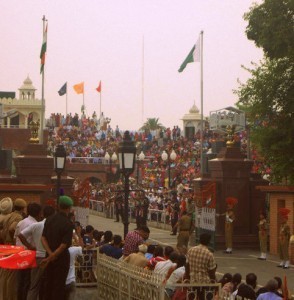 The Wagah Border Ceremony between India and Pakistan
The Wagah Border Ceremony between India and PakistanTo say that the border closing ceremony at the Wagah border between India and Pakistan was the most bizarre day of my life is an understatement. Witnessing this daily tradition between the two countries to me felt like an anthropological experiment, like I had just walked into an episode of Human Planet. Having said that, for that reason it stands out as one of my most treasured travel memories, one of those days that will stick in my mind for a very long time.
The border closing ceremony between India and Pakistan is a daily ritual that happens at the Wagah section of the border, which is accessible from the nearby city of Amritsar. Me and my travel companions took a taxi to the border, with no idea what to expect other than what one paragraph in a Lonely Planet guidebook had told us of the event – which was very little in terms of what actually went on. Along with hundreds and hundreds of locals, we walked from where the taxi dropped us off, into the main area, which can only really be described as an oval-shaped area, with huge concrete steps that spread up around it for seating, and a giant gate cutting right through the middle. That gate was the border between India and Pakistan.
As foreigners, you’re given your own seating area near the front, and piling in with a crowd of other tourists we sat and waiting for the ceremony to begin. It was hot that day, I mean really hot, and due to all the crowds, you have to get to the arena early so that everyone can get to their seats. We sat on those concrete steps for what felt like hours before anything happens, then, all of a sudden, that action began.
To get the crowd warmed up, the officials start to pump bhangra music out, and the reaction from the locals is nothing but electric. All the women in the crowds come down and gather in the centre of the arena, dancing, hollering, and radiating pride for their country. They give the women giant India flags, and they hold races from the centre of the arena, to the border gates, and back again. These races had no age limit; they started with young girls whizzing back and forth, and slowly the age on the competitors increased. At the end, two women who must have been in their 80s glided through the crowds with the flags, showing no signs of old age whatsoever. I compared this to what I would imagine my two grandmothers would look like racing, and felt it would be more hobbling and complaining of joint pain than elegance that these Indian women had.
Next, the army officials come out on both sides of the border, and what I can only describe as a shouting match ensued. To put it in its very basic terms, and I’m presuming it was much more significant than this, but it just seemed the people with the microphones simply shouted the names of their own countries or regions, seeing who could hold it for the longest and loudest. Their attempts were met by their respective crowds with deafened roars of repetition as they tried to outshout the other country.
The army officers then proceeded to march and gallivant across the middle of the arena, dressed in incredibly extravagant uniforms, complete with red turbans adorned giant fans – by far the best and most creative army uniform I’ve seen to date. There seemed to be one ranking officer in the group of around 6 in total, who continued to shout at his men, and high kick his way around the space. I have never seen a man be able to kick one foot up quite as high as this man, and I feel pretty confident that I never will see anyone who can beat him.
During this time, the gates between the two countries are opened, and both armies continues their marching towards each other and their rituals become something comparable to a Haka as the two groups direct their firey patriotism at each other.
After all that build up, the second where the two head honcho officers from each country shake hands could easily be missed in the blink of an eye, and the gates are closed, flags lowered, and the ceremonies are over. It seems that the build-up to that moment is actually worth witnessing far more than the actual moment itself, but the entire ceremony as a whole was nothing but a whirlwind of pomp and circumstance that captivated me for hours on end. Extremely weird, and without a doubt wonderful, there is no chance that you won’t enjoy the Wagah border ceremony; it’s an incredible piece of cultural curiosity that should not be missed. One thing’s for certain, you’ll leave asking yourself this question – ‘Did all of that actually just happen?!’
About the author: Emma Higgins has been writing/traveling on and off since 2009. Her blog, Gotta Keep Movin’, is full of stories and advice from her trips, which include Europe, India, Morocco, South America, USA and Canada.
The post The Wagah Border Ceremony between India and Pakistan appeared first on We Said Go Travel.
September 7, 2013
Murree, Pakistan: Top Holiday Spot
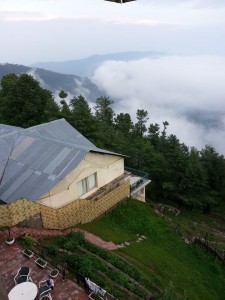
Traditional houses of Murree
Murree, Pakistan’s Most Popular Holiday Destination:
If you are a teacher in any Pakistani school and ask your pupil to write an essay on “A trip to Northern areas”, I bet 90 % of the pupil will write an account of their trip to Murree. And if you have ever wondered which place is considered a honeymoon spot in this country, the answer is Murree again!
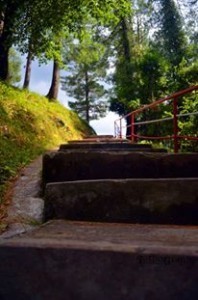
Courtesy: Qornography
Murree is situated at the height of 7500 feet in the foothills of Himalaya mountains, some 50 kilometers northwest of Pakistan’s capital, Islamabad. Mountains covered by dense jungles of pine, walnut, maple and oak trees, Murree offers its visitors a beautiful scenic view comprising of lush green landscapes, gurgling springs, tall trees hosting the chirping birds and frolicking squirrels. Flocks of monkeys gathered at the roadsides to be fed by visitors, heavy snow fall in winters and cool weather in summers aptly makes Murree the most loved vacation spot for Pakistanis.
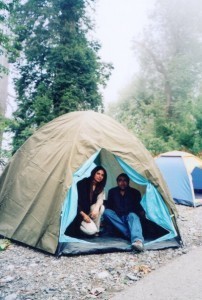
Author with her hubby at Murree
Cable cars and chair lifts at Ayubia and Patriata provide its riders the panoramic view of mountains for almost three kilometers. The famous Mall road in Murree is a must visit place for shopaholics. Whether you are interested in buying traditional handicrafts, hand woven carpets, gems and stone jewelry, Kashmiri shawls, embroidered clothes, fur coats and leather jackets, scarfs, caps or local dry fruits, mall road is the place to be. For kids, taking a ride on an iron cart pushed manually by locals is a much loved activity. White daisies are found in abundance in forests which are plucked and transformed into beautiful garlands.
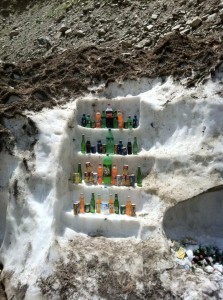
Courtesy: Omair Syed
Little children dressed in shalwar kameez, the traditional dress of Pakistanis can be seen selling the garlands on roadsides and they are immensely liked by tourist women and kids. Horse riding entertains both elders and youngsters. Spicy chicken karahi is the favorite main course here and corns roasted in salt are a very tasty, healthy and popular snack.
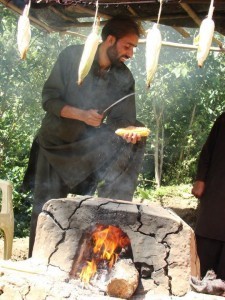
A local roasting maize in salt
Apart from Ayubia, Patriata and Mall road, places to visit include the Pindi point and Kashmir point. Pindi point is a place that views as far as Islamabad while the Kashmir point gives a panoramic view of snow laden Himalaya. Here you may find tourists holding a binocular to get a closer and clearer look of the view.
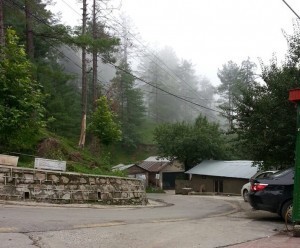 A Five star hotel located just thirteen kilometers away from Murree is quite popular among corporate sectors, foreigners and the affluent society. During winter season Murree experiences heavy snowfall making it even more beautiful.
A Five star hotel located just thirteen kilometers away from Murree is quite popular among corporate sectors, foreigners and the affluent society. During winter season Murree experiences heavy snowfall making it even more beautiful.
The permanent population of this city is small and it’s well-reputed schooling system makes it one of the most literate cities in the country. Summer and winter vacations are the peak tourist seasons and hotels are sometimes over booked due to heavy flow of tourists to escape the heat in summers or enjoy snowfall in winters. However, don’t even think of visiting this place on Independence Day or during Eid holidays. You might get stuck in one of the traffic jams and hotels will also be fully occupied which means you might end up spending the night in a corridor or hotel’s lobby.
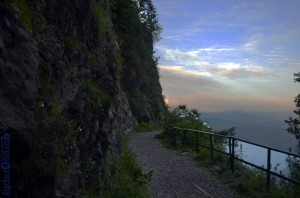
Photo credits: Qornography
So if you wish to snuggle in a blanket near the fire place with a hot cup of cappuccino and hear the sound of pitter patter rain drops falling on the roof and water puddles on roadsides, when rest of the country is using fans to cool themselves off, this is just the place to be.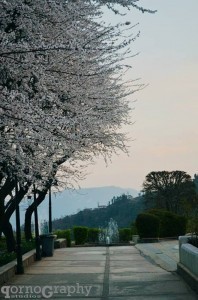
The post Murree, Pakistan: Top Holiday Spot appeared first on We Said Go Travel.
Breaking Bad: Triumphs and Tragedies
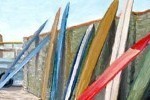 As the 10 days of awe begin, I wonder about good and evil and what is the moral thing to do. As Breaking Bad comes to an end, I wonder “How Can We Empower All People to Fuel Their Passions and Choose Reality Over Drugs?”
As the 10 days of awe begin, I wonder about good and evil and what is the moral thing to do. As Breaking Bad comes to an end, I wonder “How Can We Empower All People to Fuel Their Passions and Choose Reality Over Drugs?”Triumphs and Tragedies recounts the life story of Karl B. McMillen. The opening, written by Mr. McMillen, was the most moving to me. As he said,
I can only hope that the triumphs and tragedies I have experienced will inspire, guide, and even frighten those who have, or may encounter, any connection to drugs, alcoholism, addiction, or enabling. I survived the tragic deaths and lives of my sons and wife.
His honesty about his own addiction and seventeen years of sobriety as well as the drama in his family is stirring and depressing. He is now using his wealth to assist others so they do not lose family members to years of drug abuse and time in prison.
At times, the third person narrator telling the life story of Mr. McMillen felt a bit distant and overly-filled with early details. The stage was being set for McMillen’s many successes and golden touch in business, but it created an all-the-more tragic backdrop to the fall from grace of his two surfing-champion sons who went “from positions of popularity, potential, and affluence down into the dead end of prison and pity.”
McMillen is sharing his story to reach out to others in a way he could not grasp his sons to pull them out of harm from insidious drug use. As the narrator tells us: “Problem-solving in business doesn’t always translate into problem-solving on the most intimate of personal levels.” While McMillen “understood what people require in the way of marketed consumables and what they need to be productive as employees and partners,” his sons growing up on The Strand Hermosa Beach “succumbed not only to normal adolescent life experiments and peer pressure, but to a high tide of social change never seen before in modern Western culture.”
Mark and Chris were good-looking wealthy tan surfers in California and started not only using, but also selling drugs. When their funds got cut off, they stole the television from their own home! McMillen wondered about his responsibility in his sons’ fall: “Did the boys do drugs because we drank, or are we drinking because they do drugs?” Their lives became: “Endless Summer meets yet another episode of The Amazing Race — and Celebrity Rehab — long before the tide of reality TV shows came rolling in.” They wondered, “how did two young men with world-class athletic talents, surfer-god bodies and appearance, intelligence, morals, and loving, well-to-do parents drift into the lair” of drugs? Maybe that is the wrong question.
One son, Chris, recounts feeling unworthy and while it seems he had the easy rich life with so much to take advantage of, he followed his older brother into the den of iniquity. Why would he choose the path of drugs, dealing, stealing and jail? How can we empower all people to fuel their passions and choose reality over drugs?
Friends and family convince McMillen to stop drinking and smoking as his addictions are hurting his business. He learns in AA that “The reason most people drink is because they’re restless, irritable, and discontent.” This is after his oldest son dies, his second son is in prison and his wife has cancer.
At one point, Chris writes about his father, Karl:
Fathers always forgive their children and want what is best for them. A father is someone you respect, like an old oak tree — solid, firm, strong, and unwavering throughout the storm of life. The father is someone you can always depend on. It is a constant; always there.
After years of addiction, jail, broken bones and cancer, he and his father are able to find love and forgiveness together.
“Do you use the triumphs to make life better for others as well as yourself? Do you look at tragedies as lessons, taking what is learned and, once again, making life better for others?” McMillen and his family struggled through many hard times and have chosen to create the Thelma McMillen Center to help others.
At times in American society, it seems that drug use and prison time are blamed on poverty. This story clearly states that drug abuse can happen in any family, rich or poor, and to those of any color and background. In this tragic tale, money can buy you better treatment in jail or rehab, but until someone chooses to change their life, those around them may suffer for a long time.
Families all around the world want the best for their children. No one wants to see a loved one suffer from drugs, addiction or a lifestyle of pain and jail time. Hopefully, McMillen’s honesty in sharing his troubles will inspire others to rise to their full potential and to take advantage of each day to the fullest.
More about the book and Ken McMillen: Tragedies and Triumphs
About the Author of this Review which first appeared on the Huffington Post: Lisa Niver Rajna is a teacher, traveler and co-author of Traveling in Sin. She is a social media ninja on sabbatical in Asia with her husband. Follow their journey at We Said Go Travel.
The post Breaking Bad: Triumphs and Tragedies appeared first on We Said Go Travel.
Australia: Heading West – Elusive Taipans
The wind whipped across the plains, covering camp with yellowed dust. We quickly made breakfast, packed and soon set out over the flat ground. The earth was deeply cracked and extremely dry. In the cracks and below where we trod rested the Inland Taipan, perfectly adapted to life in the most extreme conditions. A large part of their diet is the Long-haired Rat, a formidable prey item with immense incisors that also inhabits the same cracks. Taipan numbers fluctuate with the rat numbers, more rats means more snakes.
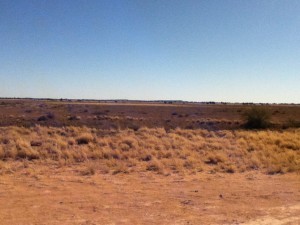
It came as no surprise why their venom had to be so potent, if they lost a meal or became injured in acquiring it death could be near. They needed to subdue their prey quickly and painlessly. Taipans are very shy and rarely encountered and even though they possess the most toxic venom of any land snake, there are no reported human fatalities.
We walked for close to two hours, searching the ground all around us. The wind began to pick up more and more and although it was extremely sunny, the breeze cooled everything down. There would be no Taipans. We turned, quite begrudgingly, and headed back to the ute.
The road back to Windorah felt exceptionally long, the straight highway endlessly swept to the horizon. Huge Wedge-tailed Eagles slowly and reluctantly flew from their easy meals of Red and Gray Kangaroos, Wallaroos and Emus, casualties of enormous road-trains, semi-trucks hauling up to four trailers, that stopped for nothing.
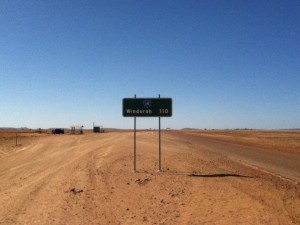
Windorah, with a population of less than 200, was a town that if you blinked, you would miss it. The caravan park was full of gray-haired vagabonds, retirees taking to the roads in oversized mobile homes. They stretched their traveler’s wings, even though there wasn’t much else that would stretch. I smiled as an old man shuffled ahead of me to the bathroom, I hoped I would be as adventurous in my golden years.
We washed up and went to one of the only restaurants in town, the Western Star Hotel. The hotel site dated back to 1878, but now it is home thirsty townsfolk and passing travelers. Faded bumper stickers from all around the continent clung tenaciously to every available surface. There were only four beers on tap, plenty of spirits on the shelf and a few disinterested bartenders with Irish accents. MTV played on the small TV above the bar.
The oversized hamburger and hefty portion of fries I ordered sat splendidly in my stomach after a week of living from cans and bread. Two cold beers, a game of darts and a game of pool later, Lockie and I thought we should try our luck on the sand dunes just out of town.
The sun had been down for an hour, but the dunes were still warm. The sand was a brilliant shade, just between red and orange and dotted with spinifex. Various species of dragons and geckos inhabited the tussocks of grass emerging at different times to find little insects. We startled four cows grazing on the dune and they ran away in a kerfuffle.
As we turned a small gecko shot out from one spinifex bush and rushed to another. It floated over the sand, leaving a tiny set of tracks in its wake. Lockie grabbed it just in time. It was tiny with big bug eyes, a V on the back of its neck, spindly legs, a big smile and fat tail. The little lizard was a Smooth Knob-tailed Gecko and lives deep in the spiny spinifex on the dunes.
We took a few photos then let the gecko go back to its night-time excursions and headed back to our camp in Windorah. We drifted to sleep as the cows in the nearby paddock bellowed.
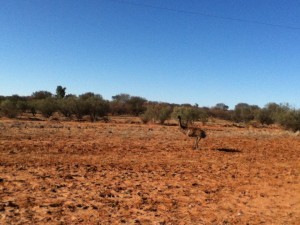
The next morning proved too windy as well. We loaded our gear back into the ute and headed back to the Sunshine Coast. It was strange returning to the coast after all our adventures. We set out in search of two incredible reptiles and returned with one marked off our list. We experienced the harsh realities of the arid interior and gained a greater understanding of those animals and people that call it home. I couldn’t wait to return.
About the Author: I’m Hunter McBryde and I am a zookeeper with a passion for reptiles. I currently live on the Sunshine Coast in Queensland, Australia, but I’m originally from Pennsylvania. I love the freedom of getting lost in nature and the excitement of a roadtrip. Special thanks to Lockie Gilding for organizing the trip and many of the photos!
Click here to read more from Hunter including the rest of this series.
The post Australia: Heading West – Elusive Taipans appeared first on We Said Go Travel.
September 6, 2013
Myanmar: Phaung Daw Oo Pagoda Festival (video)
All week the people have been preparing for the Golden Buddhas to arrive for the Phaung Daw Oo Pagoda Festival in Nyuang Shwe. On October 21, they finished building everything. From 5am on October 22, there was music. At 8am, people were buying flowers and making offerings. We could see it all from our hotel, the Golden Empress. The power was turned off in the city so there would be no accidents with the Buddha Carriage—but the ferris wheel was less fun without electricity. We saw people climbing down.
We participated in adding rice popcorn and flowers. I talked with Kyaw Khaing, Manager of Golden Empress Hotel and Memein, Claire and Bruno’s guide to learn more about this festival.
This movie is from our 28 days in Myanmar (Burma) from September 28, 2012 to October 26, 2012 and our year TRIP in South East Asia, see all the videos from our trip. October 22, 2012
Our memoir, Traveling in Sin, is available at Amazon; it is a HOT NEW RELEASE!
Traveling in Sin is a HOT NEW Release on Amazon! from Lisa Niver Rajna
Traveling in Sin is a true tale of TRANSFORMATION thought LOVE and TRAVEL! After meeting online (on two different sites), George and Lisa travel internationally, give up their jobs, condo, ice cream and toilet paper in search of adventure and love. Along the way, Lisa sheds over 60 pounds and the couple gets engaged underwater in Thailand. There are tears, twists and true love!
Recent Press:
By Amy Sommer on Westside Today
By Dani Stone on Diets in Review
The post Myanmar: Phaung Daw Oo Pagoda Festival (video) appeared first on We Said Go Travel.
Sighisoara, Romania – Go Back in Time
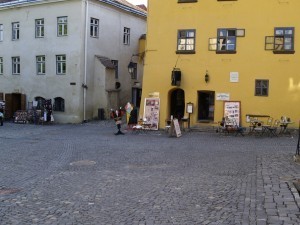 Sighisoara, Romania –
Sighisoara, Romania –Go Back in Time for a Romantic Anniversary
My first trip to Sighisoara was also my first ever independent trip, back in 2000, when I was a freshman. I have always been fascinated by Medieval castles or citadels and I was hooked from the moment I saw the citadel from the train, approaching this tiny Romanian city.
Sighisoara, located in Transylvania, Romania, is home to the citadel of Sighisoara (12th century), a UNESCO World Heritage Site. Better known for the Medieval Festival taking place here every year in July, Sighisoara is also linked to Vlad Dracul (or Vlad the Impaler; yes, I refuse to call him Dracula, because that’s just not accurate).
Actually, Sighisoara is one of the few places which can certainly be linked to the cruel Wallachia’s ruler. His father has lived in the city right about the time when Vlad was born. Another place which is undoubtedly linked to him is Poienari Castle, high in the mountains between Transylvania and Wallachia.
Landmarks and why it’s so romantic
Ever since seeing a wedding photo shoot in a very well-known women’s magazine, I wanted to do something romantic in Sighisoara. Getting married there was impossible – one of the grooms has to have residency in the city you get married in – and I wasn’t that crazy to ask a photographer to join us there for wedding photos.
However, I was pretty sure I wanted to get there for an anniversary. And I did : my first wedding anniversary! It was special and we were lucky to have the city to ourselves.
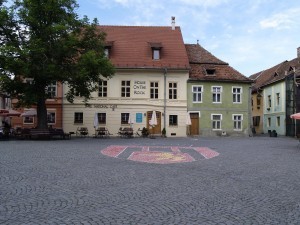 How come? Well, the main attraction in the city is the Clock Tower. Which houses a museum and also has a viewing platform. During the opening hours , the Clock Tower and the square in front of it get very crowded with tourists. Not so outside of opening hours. Unluckily – or luckily? – we arrived in Sighisoara on a Saturday past 5:30 pm and although it was late May (2013) the tower was already closed and the tourists already made their way to the cafes (which accounts for this lovely photo).
How come? Well, the main attraction in the city is the Clock Tower. Which houses a museum and also has a viewing platform. During the opening hours , the Clock Tower and the square in front of it get very crowded with tourists. Not so outside of opening hours. Unluckily – or luckily? – we arrived in Sighisoara on a Saturday past 5:30 pm and although it was late May (2013) the tower was already closed and the tourists already made their way to the cafes (which accounts for this lovely photo).
Therefore, hand in hand, we explored the citadel without a plan or a map. We just walked. I was there before three times and really, it’s hard to get lost anyway. Someway you’ll find the Clock Tower again and walk towards it.
One of my favorite places , however, is on the highest point in the city. Just take the Scholars’ Staircase all the way up to the Church on the Hill and watch the view!
How to get to
Sighisoara is located on the main railway connecting Central-Western Europe (Vienna, Budapest) to Eastern Europe (Bucharest). And yes, the international trains do stop here.
The closest airport to Sighisoara is Targu Mures Airport, currently served by quite a lot of flights (including WizzAir). An alternative airport is Sibiu Airport.
Personally, I suggest flying into Budapest and then take the train to Sighisoara.
Best time to visit
Unless you want to spend too much money on accommodation and tackle the crowds, then it’s best to avoid the Festival (last weekend of July, every year). However , the citadel is charming during the festival and there are a lot of events going on.
The winters can be harsh but the city is just beautiful (I saw some photos and I was hooked).
So far I’ve been to Sighisoara only during early or mid-Summer but I’d certainly fancy a trip in spring. Still, weekends tend to be busiest year-round (yes, on Valentine’s , too).
Please, wear very comfortable walking shoes. The entire are is paved with cobble stone , which can get slippery when raining and can be very hard on the feet.
(c) all photos by Krisztina P and cannot be used without permission
The post Sighisoara, Romania – Go Back in Time appeared first on We Said Go Travel.
Australia: Heading West- Birdsville and Taipan Plains
The escarpments slowly faded in the rearview mirror the further west we traveled. Spinifex grasses began to stretch into the horizon, following the flat flow of land. It seemed as though the air outside of the ute had become drier, brighter. The earth was tanned and cracked with no trees from highway to horizon. We turned left onto the Birdsville Track and began the 280 kilometer trek deeper into the outback.
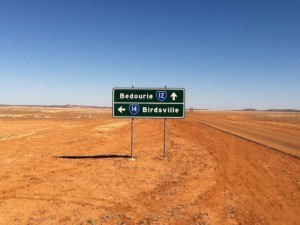 Most of the road was sharp gravel, except for short stretches of asphalt that also served as emergency airstrips. The ride was jarring, a constant hum of tire over stone served as our music down the highway as we chased the setting sun over sand dunes and around escarpments. There was not a single town we passed and only occasionally another vehicle, it was truly remote.
Most of the road was sharp gravel, except for short stretches of asphalt that also served as emergency airstrips. The ride was jarring, a constant hum of tire over stone served as our music down the highway as we chased the setting sun over sand dunes and around escarpments. There was not a single town we passed and only occasionally another vehicle, it was truly remote.
The sun became too intense by around 5:30 PM so we pulled off to watch it set. We climbed a sand dune, blood-red in the evening light and watched as the sky turned intensely orange and yellow, slowly mellowing to pink and lavender. After a short time we were enveloped in a velvety blackness with bright white stars quickly filling the inky abyss above.
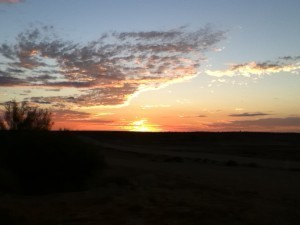
We continued our journey to Birdsville, dodging roos the whole way. After a few hours we could see lights on the horizon, the only lights aside from our headlights and the sparkle of stars. The streets of Birdsville were fairly deserted but the pub was well-lit and full of people. We found a campground, set up camp and enjoyed the first shower we had in days. I felt like a new man, still high from the day’s find as I crawled into my warm swag and drifted off into a deep sleep.
The next morning I awoke to the cackles of Crows. Everyone in the campground was already awake, moving about. Laughing families mingled with the smell of bacon and toast on the breeze. Lockie and I began packing up our swags, ready to explore Birdsville for a bit, then head to the Mitchell Grass Downs, better known to us as the Taipan Plains.
As we threw our gear into the bed of the ute, Lockie looked down at the tires. The front passenger side tire had a significant puncture and sat nearly flat. We looked at each other, knowing full well how serious a flat tire would have been on the road, potentially hundreds of kilometers from the nearest town.
Lockie carefully drove to the nearest gas station; we filled up on diesel and supplies, then made our way to the mechanic whose faded sign once proudly stated “We Fix Punctures!” He was a short man with a gaped smile and decent stomach that protruded slightly under his jacket. After a short wait, he popped the tire off and began grinding the rubber.
The garage seemed to be the meeting place for many travelers; I met old men from all over Australia, a short woman with dreadlocks, and two men trying to rent a semi-truck from the owner. I chuckled to myself when I glanced into the trashcan, it was full of XXXX Gold beer bottles; remnants, no doubt, from the end of a long working day. A short time passed before the mechanic finished and reassembled the tire and we were on the road again.
Just on the outskirts of town we pulled into a sacred ceremonial spot that was the stopping point for Thutirla Pula Dreamtime Story. It was the tale of two boys that crossed the desert to bring far-flung tribes of the east beautiful feathers for ceremonial decoration. The boys and the tribe met there, in Wirrarri (Birdsville), to celebrate and share the feathers.
I always felt humbled at sacred places such as Wirrarri, it was as though I could feel the guardians watching as we meandered along the winding path. A flock of six Brolgas ungainly sailed above us, their long legs hanging awkwardly; Zebra Finches, with their sharp tweets, flashed about us, pausing only briefly.
We returned to the ute and rumbled back down the rocky highway. By the time we arrived at the Taipan Plains it was almost dark. We quickly set up camp, built a small fire and cooked supper. A feral cat persistently strolled through camp, desperately trying to find scraps of food. Lockie and I settled in for the night, I left my swag open and gazed at the night’s sky.
Satellites slowly passed overhead. The moon hung only halfway in the sky, but the stars had never been clearer. There was not a cloud in the sky, the Milky Way reached from horizon to horizon and painted the black night almost white. I looked to the open plain on my right; the grasses were silver, ghost-like. Somewhere out there was the world’s most venomous snake and we planned on finding it in the morning.
Click here to read more from Hunter including the rest of this series.
The post Australia: Heading West- Birdsville and Taipan Plains appeared first on We Said Go Travel.
September 5, 2013
Fun in the Philippines
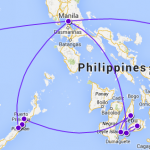 Happy September and L’Shana Tova (Happy Jewish New Year!) Do you get our newsletter? This is from our recent news: Fun in the Philippines
Happy September and L’Shana Tova (Happy Jewish New Year!) Do you get our newsletter? This is from our recent news: Fun in the Philippines
Our two weeks of travel in the Philippines have been varied and fantastic! Our visit included sharing the underwater world of Balicasag with giant turtles and a tornado of jack fish as well as swimming with five school bus size Whale Sharks in Oslob, Cebu! We also saw the highlights of international design with Kenneth Cobonpue and the UNESCO sites of the Chocolate Hills and Underground River. I cannot wait to share all the photos and video especially of the fine hotels of Manila like Resorts World and Hotel H20 as well as Be Resort and Marco Polo in Cebu and Hotel Centro and Acacia Tree Garden Hotel in Puerto Princessa. Ricky of Cebu Holiday Tours and Rissa, the author of The Philippines: 100 Travel Tips, have been incredible guides and friends.
WATCH: Puerto Princessa: Hula Hooping Gangnam Style with Iwahig Dancing Inmates
Lisa joins the Iwahig Dancing Inmates in Puerto Princessa for Hula Hooping Gangnam Style!
Dancers:
Juris from Cebu
Sandy from Manila
Allan from Manila
Dennis from Laoag
Pallet Jr. from Laguna
Abraham from Aparri
Hula Hooper: Lisa Niver Rajna
Video filmed by: George Rajna
Tour Guide: April from Amika Travel
Special thanks to Rissa and Ricky from Cebu Holiday Tours
August 31, 2013
We swam with five school bus sized whale sharks in Oslob, Cebu! Cannot wait to share more of the photos, but here is one of George and I! We just now in Koror, Palua to swim with the stingless jellyfish! Looking forward to telling you all about it! L’Shana Tova–to a good and sweet New Year!
The post Fun in the Philippines appeared first on We Said Go Travel.
We Said Go Travel
We Said Go Travel is a global community of over sixteen hundred writers with articles from every continent.
Stories are shared with photos and video from a perspective of the transformative power of travel. We Said Go Travel has hosted live and online events as well as travel writing contests around the world. ...more
- Lisa Niver's profile
- 57 followers


